There’s nothing quite like a crisp, juicy cucumber picked fresh from the vine on a warm summer day. Whether you enjoy them sliced in salads, pickled in jars, or as a refreshing snack, cucumbers are a staple in home gardens around the world. Fortunately, they’re also one of the easiest and most rewarding vegetables to grow — whether you’re tending a spacious backyard plot or managing a few containers on a sunny balcony.
In this complete guide, we’ll show you how to grow cucumber plants for a bountiful harvest of refreshing vegetables, from selecting varieties to planting, care, and harvesting.
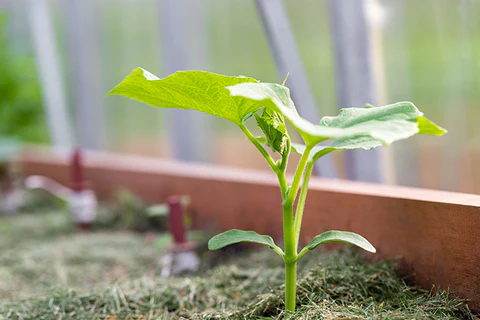
Why Grow Cucumbers at Home?
Growing your own cucumbers means you get the freshest, most flavorful produce possible. Store-bought cucumbers often lose their crispness and flavor after days in transit and on shelves. By cultivating them at home, you can enjoy them straight from the vine — at peak ripeness.
Homegrown cucumbers are also free from pesticides and can be customized to suit your preferences. Whether you like crunchy slicers for salads or smaller varieties for pickling, the choices are endless.
Popular Cucumber Varieties to Grow
Before planting, it’s important to choose the right type of cucumber for your garden and how you plan to use them. Cucumbers generally fall into two categories: slicing cucumbers and pickling cucumbers.
Best Slicing Varieties:
- Marketmore 76: Disease-resistant and reliable, with smooth, dark green fruits.
- Straight Eight: Classic heirloom variety with crisp, 8-inch fruits.
- Burpless Beauty: Mild, less bitter cucumbers perfect for fresh eating.
Best Pickling Varieties:
- Boston Pickling: Produces small, firm cucumbers ideal for pickling.
- National Pickling: A popular, fast-growing, and prolific variety.
- Picklebush: Compact, ideal for container gardens.
Tip: Also consider bush varieties if you have limited space or want to grow cucumbers in containers.
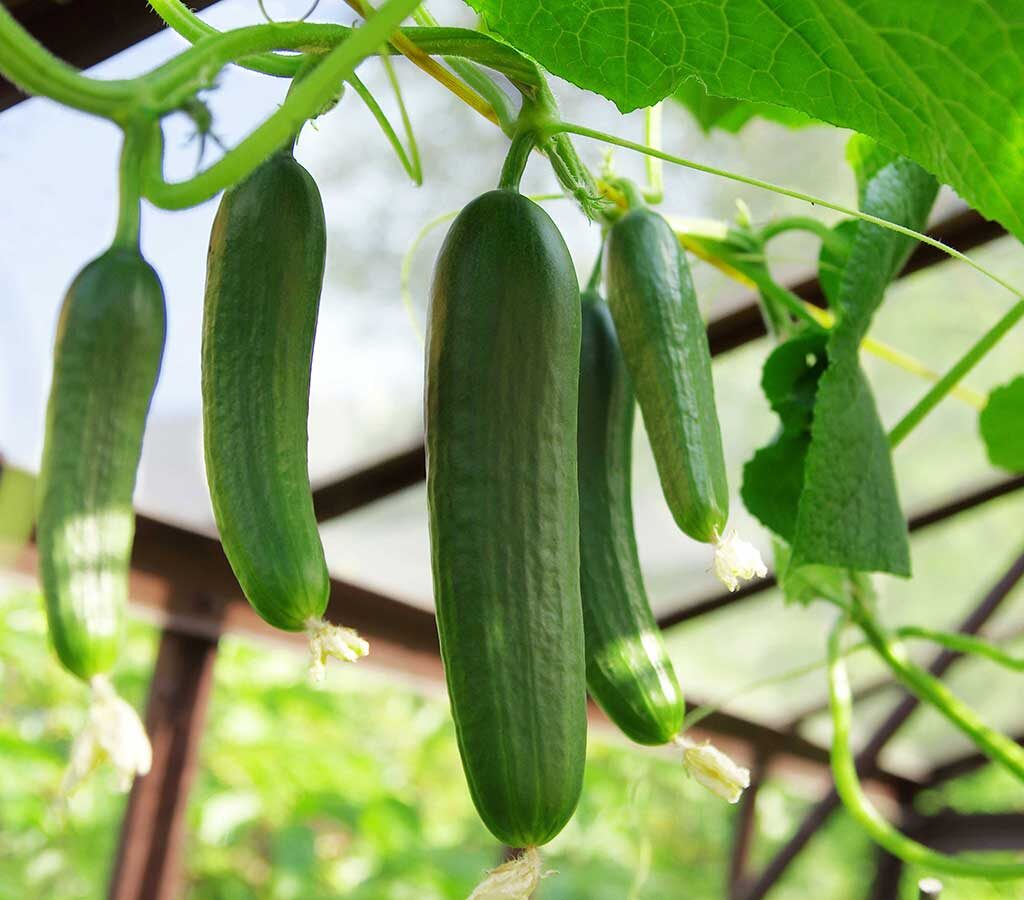
When and Where to Plant Cucumbers
Cucumbers are a warm-season crop and grow best in temperatures between 70°F and 85°F (21°C–29°C). They are highly sensitive to frost, so timing is key.
Ideal planting time:
- Outdoors: 1–2 weeks after the last spring frost, when soil is at least 60°F (16°C).
- Indoors (for transplanting): Start seeds 3–4 weeks before your last frost date.
Sunlight requirements:
- Full sun (at least 6–8 hours daily)
Soil needs:
- Loose, well-draining soil rich in organic matter.
- pH between 6.0 and 7.0.
Preparing the Soil
Cucumbers grow best in fertile, nutrient-rich soil.
Steps:
- Loosen soil to a depth of 8–12 inches.
- Mix in compost, aged manure, or organic matter.
- Apply a balanced fertilizer (10-10-10) before planting.
If your soil is heavy clay or poorly draining, consider growing cucumbers in raised beds or large containers.
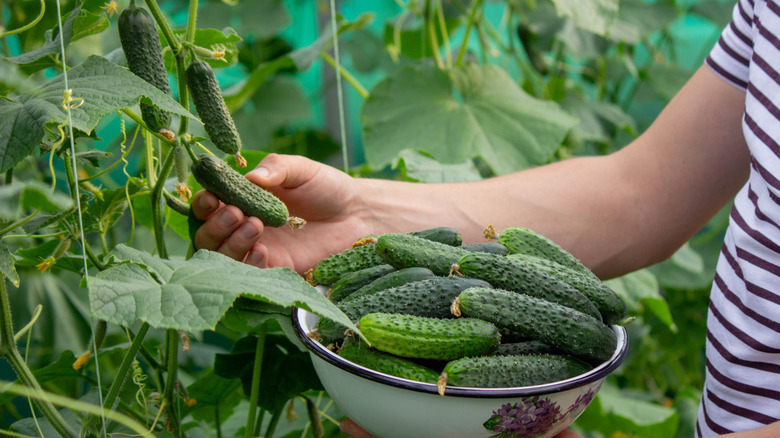
How to Plant Cucumbers
Cucumbers can be planted by direct sowing seeds outdoors or transplanting young plants. They can grow on the ground or trained on a trellis to save space and keep fruits clean.
Direct sowing:
- Plant seeds 1 inch deep and 12–18 inches apart in rows or mounds.
- Space mounds 3–5 feet apart.
- Thin seedlings to the strongest 2–3 plants per mound.
Transplanting:
- Start seeds indoors in biodegradable pots.
- Harden off plants before transplanting.
- Space transplants as you would direct-sown plants.
Trellising:
If using a trellis or vertical support, plant cucumbers 8–12 inches apart along the base of the support.
Watering and Mulching
Cucumbers need consistent moisture to produce juicy, crisp fruits.
Watering tips:
- Water deeply 1–2 inches per week, more during hot, dry spells.
- Water at the base of plants to keep leaves dry and reduce disease risk.
- Avoid letting soil dry out completely, which can lead to bitter fruits.
Mulching:
- Apply a 2–3 inch layer of straw, grass clippings, or compost to retain moisture and suppress weeds.
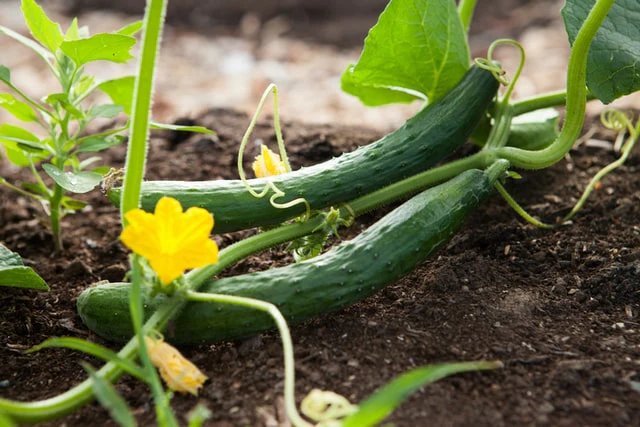
Fertilizing Cucumbers
Cucumbers are relatively heavy feeders. Provide nutrients at key growth stages.
Fertilizing schedule:
- At planting: Mix in a balanced fertilizer or compost.
- When vines begin to run: Apply a side-dressing of fertilizer.
- During flowering: Use a fertilizer higher in potassium and phosphorus to support fruit development.
Cucumber Care and Maintenance
Weeding:
Keep the area around plants weed-free to reduce competition for nutrients and water.
Training vines:
If trellising, gently guide and tie vines to supports as they grow.
Pollination:
Cucumbers produce both male and female flowers. Bees and other pollinators play a vital role. If fruit production is poor, consider hand-pollinating with a small brush.
Common Pests and Diseases
Cucumbers can be prone to pests and diseases, especially in humid conditions.
Pests:
- Cucumber beetles: Feed on leaves and flowers. Use row covers early in the season.
- Aphids: Suck plant sap. Control with insecticidal soap or strong water sprays.
- Spider mites: Tiny, sap-sucking pests causing stippling. Wash off with water or use neem oil.
Diseases:
- Powdery mildew: White, powdery fungus on leaves. Improve air circulation and use fungicides if necessary.
- Downy mildew: Yellow spots on leaves. Water at the base and remove affected foliage.
- Bacterial wilt: Spread by cucumber beetles. Control beetles early to prevent infection.
Harvesting Cucumbers
Cucumbers grow quickly, so check your plants daily once they start producing.
Harvest guidelines:
- Pick cucumbers when they’re firm, bright, and evenly colored.
- For slicing cucumbers: Harvest at 6–8 inches long.
- For pickling cucumbers: Harvest at 2–4 inches.
Harvest tips:
- Use sharp garden scissors or pruners to avoid damaging vines.
- Regular picking encourages continued production.
How to Store and Use Fresh Cucumbers
Cucumbers are best eaten fresh but can be stored in the refrigerator for up to a week.
Storage tips:
- Store unwashed in perforated plastic bags in the crisper drawer.
- Keep them away from ethylene-producing fruits like apples and bananas.
Culinary uses:
- Fresh in salads, wraps, and sandwiches.
- Pickled into classic dills, bread-and-butters, or spicy spears.
- Blended into cold soups like cucumber gazpacho.
- Infused in water for a refreshing drink.
Final Thoughts
Growing cucumber plants at home is one of the most satisfying gardening experiences. With just a little care and attention, you can enjoy crisp, refreshing cucumbers all summer long. Whether you love snacking on them fresh, tossing them in a salad, or pickling them for later, having a steady supply of homegrown cucumbers is a culinary treat.
Choose your favorite varieties, give them sun, water, and fertile soil — and you’ll be rewarded with a harvest that’s crisp, cool, and perfect for warm weather days.

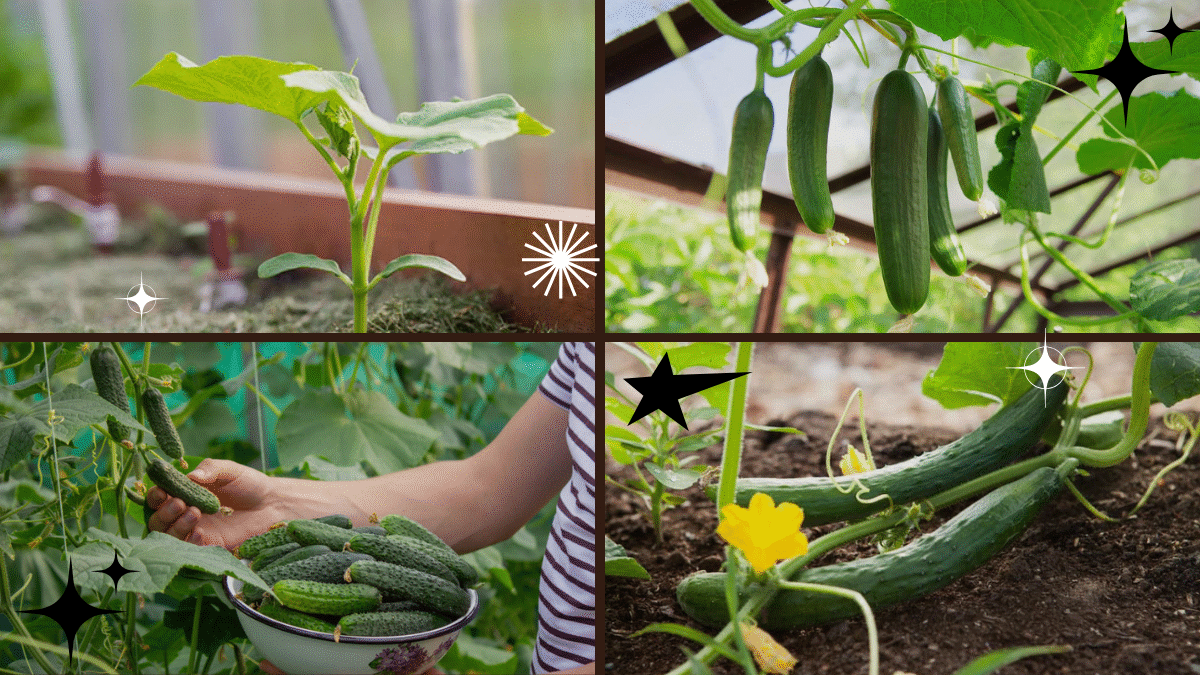



Leave A Comment